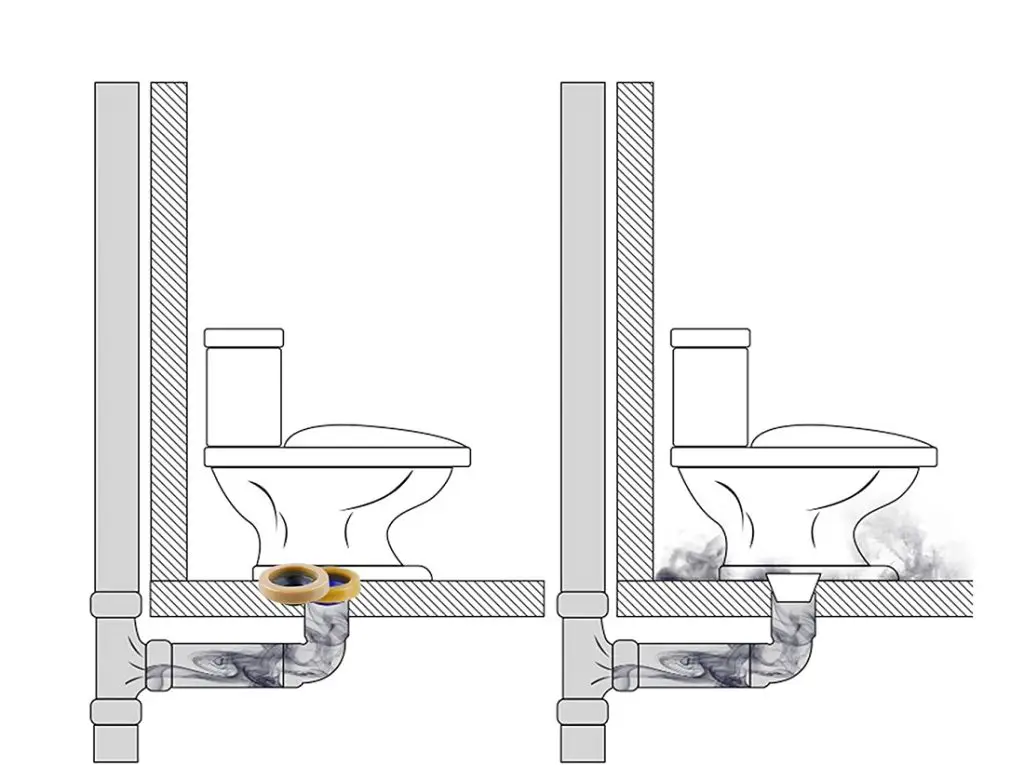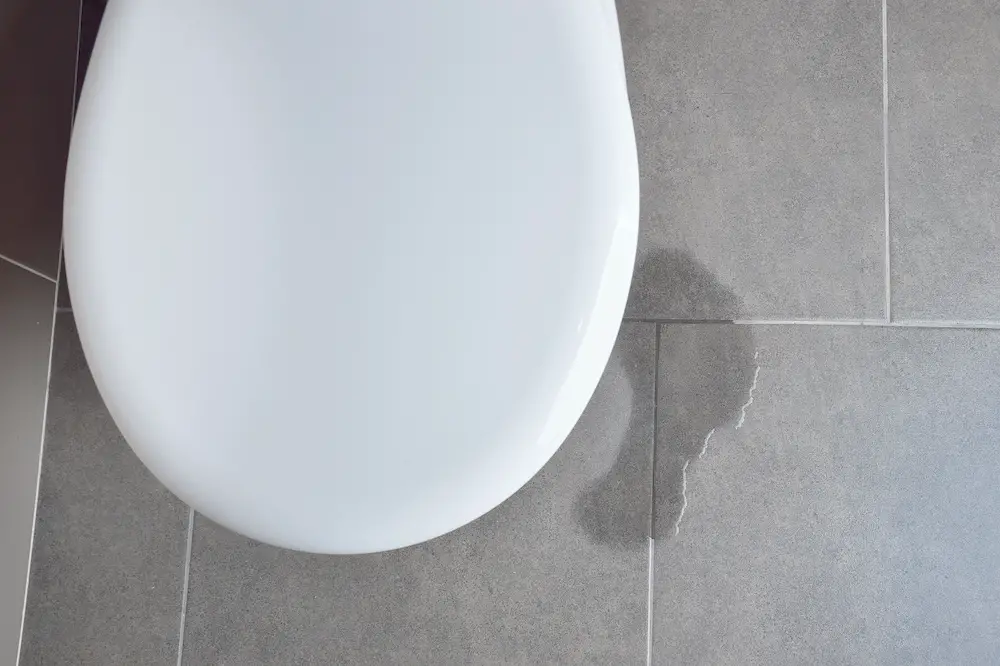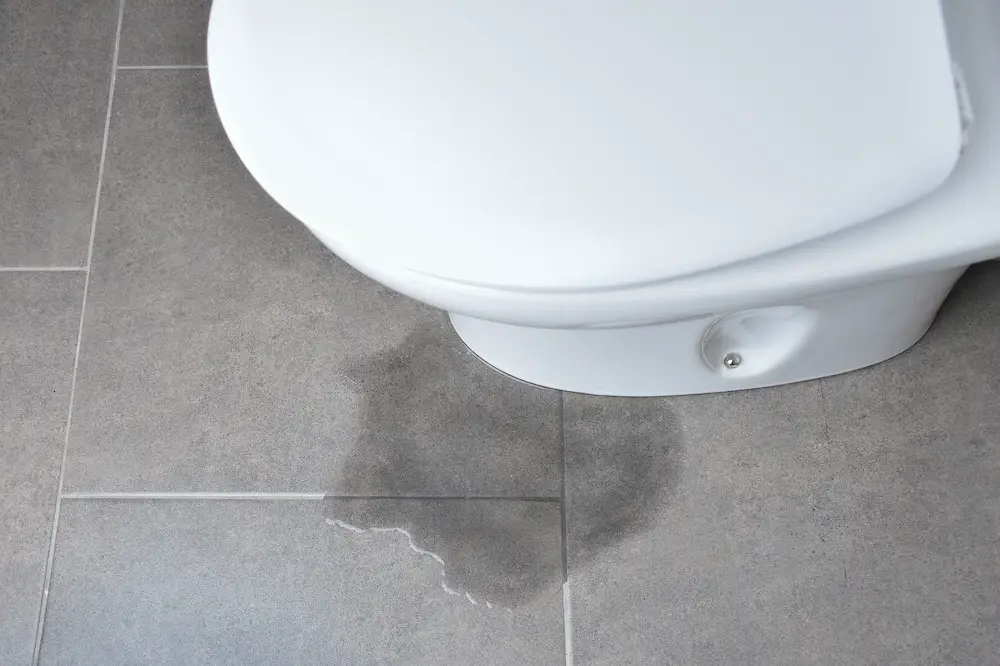Entering your washroom just to find the floor flooded with water can make you worry.
Toilet leaking at base is a serious concern because you don’t know the leading cause behind it.
The leakage can either be from the toilet bowl or the sanitary.
In either case, leaving the toilet leaking can severely damage tiles, flooring, subfloor, or worse, the below-room’s ceiling.
You can either opt to resort to temporary solutions such as installing a tray or insulating a tank to prevent condensation.
On the other hand, you can reseal the toilet base, following the instructions we provided below.
How Can You Tell if Toilet Wax Ring Is Leaking?
You can find a toilet wax ring between the base and the connecting flange in the floor.
The concept is quite simple: the toilet base’s pressure expands the sticky and malleable wax to form a watertight seal.
However, the wax is soft and pliable, leading to occasional leakage.
It means you need to replace the wax ring to prevent any further water damage.
- Water Leaks
A toilet leaking around base indicates wearing out of the wax ring, serving as a seal between the toilet base and drainpipe under the bathroom.
Later, the water seeps up from the grout in the tile around the toilet’s base.
- Unpleasant Odor
Another sign of wax ring leakage is an unpleasant odor in your bathroom that even your exhaust fan can’t dissipate.
You can also add food color to the toilet tank if you don’t know the water leakage source.
If the water on the floor is of the same color, you need to install a new toilet wax ring.
Other than that, toilet leaking from base implies cracked base or loose mounting bolts.
You can have a slab leak caused by leakage of one of your pipes in the concrete foundation.
By the way, it’s one of the most challenging tasks to repair a slab leak.
It’s essential to know that you need to install a new wax ring if you remove the toilet for any reason.
How Long Does the Wax Seal on a Toilet Last?
Do you know that a toilet may last for more than 30 years with minimal care?
You don’t need to replace a wax seal periodically without any reason.
It means you can replace it only if you notice a toilet leaking from base, or a bad odor.
On the other hand, you can consider replacing a rotten wax seal if you have a wood subfloor.

How Do I Fix a Leaking Toilet Base?
You can only fix the issue if you know the reason behind the toilet leaking around the base.
As such, you must first inspect the washroom and ask yourself the following questions:
- Is there a small pool of water where the toilet meets the floor?
- Is the floor around the toilet feels spongy?
- Is the finished flooring coming up?
If your answer is yes to any of the above questions, you have a toilet leakage due to the following reasons:
Small Leaks
Sometimes, small leaks may get trapped beneath the toilet, which will rot floor surfaces and the underlying framing.
Loose Tee Bolts
You can find plastic caps covering tee bolts to keep the toilet securely in a stable position.
These bolts may damage or come loose, breaking the toilet’s seal.
In this case, you need to alter the toilet’s position to level and re-center it before tightening the tee bolts.
However, if they keep spinning freely, you need to buy a replacement set.
Faulty Wax Seal
Another reason behind the toilet leaking at base is a faulty or loose wax ring, which is no longer pliable to provide a perfect seal.
Not only that, but the toilet may rock and ultimately break the seal formed by the wax ring.
Water Condensation
The water condensing on the toilet drips down to puddle around the toilet’s base.
Basically, the water in the toilet bowl and tank is quite cold.
Also, the cool porcelain causes humid room air to help condense and then drip down onto the floor.
You can misinterpret the water droplets collecting outside the porcelain bowl and tank as the toilet leakage.
Keeping the air less humid can help, use a quality exhaust fan to help remove humidity. If condensation persists you can insulate your tank from the inside.

How Do You Reseal a Toilet Base?
You need the following essential items before pulling the toilet:
- A new wax ring
- Two sets of water closet bolts
- A tube of silicone-based caulk
- Plastic toilet shims
- Toilet tank drip tray
- Toilet tank insulation
- Replacing tee bolts
- Sponge
- Bucket
- Hacksaw
- Putty knife
- Work gloves
- Tub and tile caulk
Let’s discuss three methods to prevent the toilet from leaking before resealing a toilet base.
Step #1: Install a Tray
For condensation sweating, you can install a drip tray to keep the water off the floor.
It’s not a permanent solution, though; it gives you time to work upon a permanent fix.
Step #2: Insulate the Tank
You can reduce condensation by using tank insulation to keep the tank’s water from cooling down the porcelain.
You need to cut the tank insulation rolls into panels to fit inside the tank’s four surfaces.
The self-adhesive backing makes it easy for you to adhere to the tank’s inside panels.
Step #3: Check the Flapper
A faulty flapper allows a small and constant stream of cool water to flow into the toilet tank.
The in-tank water’s lower temperature builds up condensation of humid room air on the tank’s outside.
That’s why it’s essential to check the flapper to create a proper seal.
Step #4: Install a New Wax Ring
To install a new wax ring, here’s what you need to do:
Shut Off the Water Supply Valves
First, shut off the water supply water valves entirely and remove the water line leading to the tank.
You can find the valve placed in the basement or behind the toilet.
All you need to do is to turn the handle clockwise to shut off the water supply.
You also need to double-check and listen for any trickling water. If the water is still running, you can shut off the main water valve in the house.
The next step is to drain the sitting water from the tank by flushing the toilet.
Then, loosen the nuts that hold the valve in place to remove leftover water from the toilet’s base.
Now you can unscrew the water closet nuts with a wrench.
However, unscrewing old, corroded water closet nuts may prove to be a struggle. In this case, you can simply cut them off with a hacksaw.
Pry the bolt caps, remove the tee nuts, and break the wax seal.
You can now remove the toilet from the floor and place it aside on cardboard or a blanket.
Remove the Wax Gasket
The primary process starts here when you need to remove the wax gasket.
You need to clean away the wax ring with a putty knife.
You must make sure there isn’t any leftover residue or dry wax either at the flange or toilet’s base.
Once done with all the cleaning, replace the corroding tee bolts if you find any.
You also need to replace the whole flange if it’s cracked or bent.
You can also fill the gap using a crescent-shaped repair strap, an affordable but reliable solution.
Install a New Wax Ring
You can install a new wax ring by placing it over the closet flange. Be careful to place it properly at the center before repositioning the toilet.
The real challenge is to install the toilet in the primary position.
Actually, the goal is to make an airtight seal by pushing the toilet over the wax ring using your body weight.
Conversely, you can replace the toilet altogether if it has a chrome-plated copper pipe.
After placing the toilet over the wax ring, you need to screw the bolts into place and open up the shutoff valve to turn on your water supply.
Check the toilet’s base for any leak by flushing it several times to inspect leaks from the seal.
If you notice a puddle, you can press down the toilet bowl and tighten the bolt nuts more.
You can wait a couple of days before caulking the toilet to ensure that the leakage issue is resolved.
Caulk the Toilet
We hate to break this to you, but caulking isn’t a solution to the leaking toilet problem.
On the other hand, it prevents various sources from reaching the toilet base.
It’s because once the water gets trapped below the base, it may lead to odors and molds.
Caulking also makes it easier for you to clean up the water from the floor.
Toilet Leaking at Base: The Conclusion
A toilet leaking from bottom not only increases mold growth in your washroom but also increases your hydro bills.
It’s essential to address and resolve the leaking issue by resealing the toilet base yourself or calling a professional plumber.
The leading causes for leaks at the base include a faulty wax ring, condensation, loose tee bolts, or cracked toilet bowl.
All you need to do is to identify the primary source and then tighten tee bolts or replace the wax seal accordingly.









